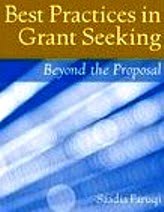Deep down each one of us is convinced that the program (or service or organization) we are writing grant proposals for is absolutely and imperatively needed in the community. And we also know that the needs statement of a grant proposal is the ideal venue for a detailed explanation of the need that exists in the community. Yet sometimes it becomes difficult to find the relevant information to adequately explain that need in the most fascinating and urgent of tones. Although the descriptive quality of a needs statement should not be downplayed, the fact remains that the star of this show must always be the quantitative data that proves without a shadow of doubt the gap in services that your organization is trying to fill. The dilemma lies in the fact that data is usually BORING!
Data doesn't have to be stale or boring, though, if we are creative enough as writers. The most obvious places to look for data are the U.S. Census, demographic studies of the state and local service areas, and other usual suspects. In fact I wrote a post on this topic a while back with some great websites and samples. But sometimes a little bit of creativity and detective work can make the difference between a dry and stellar needs statement. Here are some less obvious places to search for creative information:
- Reports and studies published by local think tanks and large funders about your field of service; for example Public/Private Ventures which conducts research on a variety of topics such as mentoring, crime reduction and community health.
- Studies produced by large agencies working in the same field, such as Girls Inc. whose fact sheets tackle a host of social issues as they relate to girls.
- Community research organizations, such as CRI in Michigan, may have access to more recent and in-depth demographic data about specific counties or cities, even neighborhoods.
- The social work or research departments of your local university may have access to information already published or may be willing to conduct needs assessments for your organization as part of their academic activities.
- Large grantmakers may periodically conduct community assessments to understand a specific issue; particularly community foundations and health conversion foundations are mandated to assess public opinion and data for their grant making priorities.
- Feedback forms completed by your own clients can offer clues regarding service gaps and needs; although not highly scientific, such surveys if conducted in large numbers may be able to demonstrate need from a very close angle.
Needs Assessments can be a nightmare to write without the appropriate information, and a nightmare to read when filled to the brim with statistics. The best way to make sure that your assessment best shows the need, is to creatively brew a mix of qualitative and quantitative information. And be sure to articulate the urgency. The rest is up to the funder.





No comments:
Post a Comment